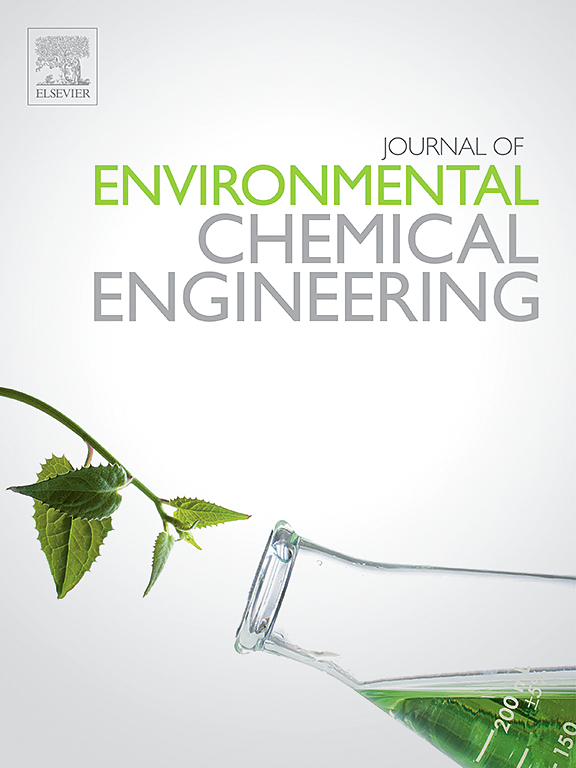Layered double hydroxides as versatile materials for detoxification of hexavalent chromium: Mechanism, kinetics, and environmental factors
IF 7.4
2区 工程技术
Q1 ENGINEERING, CHEMICAL
引用次数: 0
Abstract
Hexavalent Cr (CrVI) compounds are a common environmental pollutant that causes carcinogenesis and interferes with the normal process of the cells. Layered double hydroxides (LDHs) as a class of ionic solids with hydroxylated metals in two layers and an intermediate layer containing water molecules and anions, e.g., CO32−, SO42−, Cl−, can be used for wastewater treatment, controlled drug delivery, pharmaceuticals, cosmetics, and electrochemical sensors. The use of LDHs to remove CrVI from aqueous environments has been considered because they have advantages such as biocompatibility and high efficiency. CrVI is converted to the less dangerous trivalent Cr (CrIII) by some of the LDHs, e.g., MgFe LDH, MgAl LDH, and NiFe LDH. In this review, after a summary of the LDHs principle, the main mechanisms of CrVI removal, including adsorption, interlayer ion exchange, and redox process, and the kinetics of CrVI removal have been described. The influential factors in CrVI removal efficiency by LDHs, including modification of LDHs, pH, and the effect of LDH interlayer anions, were reviewed in depth. The appropriate selection of interlayer anion, using intercalated LDHs, LDHs composite developing, as well as divalent and trivalent metals of LDHs, is effective in its performance; Also, modifying LDHs and preparing LDH-composites can improve the efficiency of removing CrVI.
层状双氢氧化物作为解毒六价铬的多功能材料:机理、动力学和环境因素
六价铬(CrVI)化合物是一种常见的环境污染物,会致癌并干扰细胞的正常工作过程。层状双氢氧化物(LDHs)是一类离子固体,两层为羟基化金属,中间一层含有水分子和阴离子(如 CO32-、SO42-、Cl-),可用于废水处理、控制药物输送、制药、化妆品和电化学传感器。由于 LDHs 具有生物相容性和高效率等优点,因此考虑使用 LDHs 去除水环境中的六价铬。一些 LDH(如 MgFe LDH、MgAl LDH 和 NiFe LDH)可将六价铬转化为危险性较低的三价铬(CrIII)。本综述在概述了 LDHs 的原理之后,介绍了六价铬的主要去除机制,包括吸附、层间离子交换和氧化还原过程,以及六价铬的去除动力学。深入探讨了 LDHs 去除六价铬效率的影响因素,包括 LDHs 的改性、pH 值和 LDH 层间阴离子的影响。适当选择层间阴离子,使用插层 LDHs、LDHs 复合开发以及 LDHs 的二价和三价金属,对其性能是有效的;此外,改性 LDHs 和制备 LDH 复合材料也能提高去除六价铬的效率。
本文章由计算机程序翻译,如有差异,请以英文原文为准。
求助全文
约1分钟内获得全文
求助全文
来源期刊

Journal of Environmental Chemical Engineering
Environmental Science-Pollution
CiteScore
11.40
自引率
6.50%
发文量
2017
审稿时长
27 days
期刊介绍:
The Journal of Environmental Chemical Engineering (JECE) serves as a platform for the dissemination of original and innovative research focusing on the advancement of environmentally-friendly, sustainable technologies. JECE emphasizes the transition towards a carbon-neutral circular economy and a self-sufficient bio-based economy. Topics covered include soil, water, wastewater, and air decontamination; pollution monitoring, prevention, and control; advanced analytics, sensors, impact and risk assessment methodologies in environmental chemical engineering; resource recovery (water, nutrients, materials, energy); industrial ecology; valorization of waste streams; waste management (including e-waste); climate-water-energy-food nexus; novel materials for environmental, chemical, and energy applications; sustainability and environmental safety; water digitalization, water data science, and machine learning; process integration and intensification; recent developments in green chemistry for synthesis, catalysis, and energy; and original research on contaminants of emerging concern, persistent chemicals, and priority substances, including microplastics, nanoplastics, nanomaterials, micropollutants, antimicrobial resistance genes, and emerging pathogens (viruses, bacteria, parasites) of environmental significance.
 求助内容:
求助内容: 应助结果提醒方式:
应助结果提醒方式:


